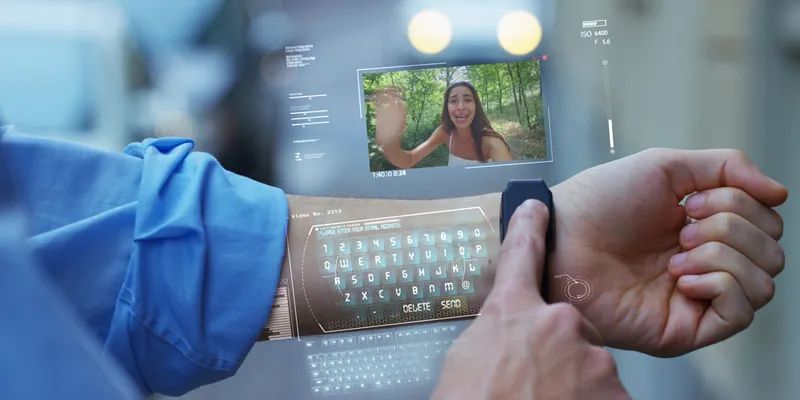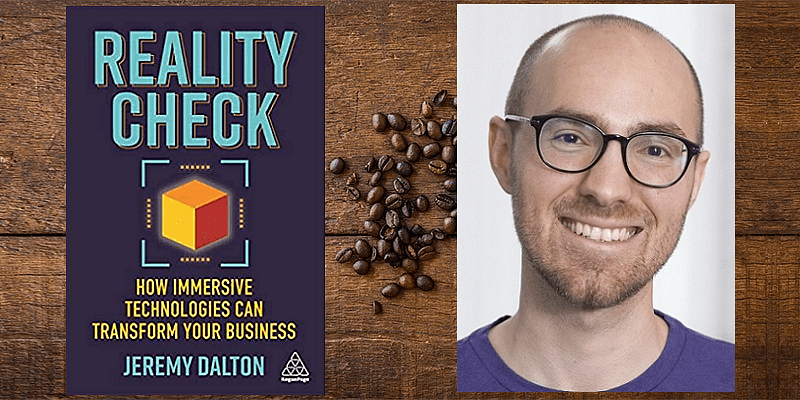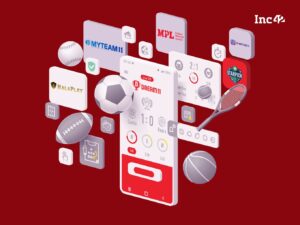A range of immersive media applications like augmented reality (AR) and virtual reality (VR) is already delivering solid benefits to organisations across industry sectors, from learning and operations to sales and design. They are well chronicled in the book Reality Check: How Immersive Technologies can Transform your Business, by Jeremy Dalton (see my book review here).
From market research to impact analysis, the book covers five phases in implementing XR (extended reality): discover, design, develop, deploy, and debrief. There are also profiles of a number of startups and tech players in XR.
Based in London, Jeremy Dalton leads PwC’s VR/AR team and helps customers understand, quantify and implement the benefits of virtual reality and augmented reality technology.
See also YS’s Book Review section with takeaways from over 290 titles on creativity, entrepreneurship, innovation, social enterprise, and digital transformation.
Jeremy joins us in this chat on new XR implementations, market drivers, and tips for innovators.
Edited excerpts from the interview:
YS [YS]: In the time since your book was published, what are some notable new XR implementations you have come across?
Jeremy Dalton [JD]: There are new XR implementations appearing everyday – for example, the United States Centers for Disease Control and Prevention just released a VR application for training in laboratory safety procedures. This is why I deliberately highlighted a wide range of business case studies in Reality Check. It’s not about how new they are, but what they show the technology can do to add value to businesses.
YS: What is your current field of research in XR?
JD: I am supervising a study in collaboration with the University of Bath on the value of virtual reality for job skills simulation (i.e. hard skills). This is being funded by the Engineering and Physical Sciences Research Council (EPSRC) and conducted through the Centre for Digital Entertainment (CDE). It is a four-year agreement, and we will hopefully have some exciting initial results over the next 12 months.
YS: One of the interesting examples you mentioned was AR use by NHS during COVID-19. Are there other cases you can cite of how XR can help understand or deal with pandemics?
JD: Absolutely, let’s take a look at another part of the world: doctors in Taiwan are using virtual reality to learn how to treat coronavirus patients. They can do this at any time without the need for a physical teacher present and can familiarise themselves with the procedure without any risk of harm or transmission of the virus.

YS: How was your book received? What were some of the unusual responses and reactions you got?
JD: I am very grateful for the interest in Reality Check. I’ve had business leaders, XR industry colleagues, and university professors message me and discuss the book on social media. One of the most memorable messages I received is from a professor who runs an XR business: he was very thankful for the book as it gave him the evidence and communication points he needed to sell the technology successfully.
I’ve been surprised by the interest in the book from the XR community as I originally wrote it for business leaders who wanted to know more about the technology, but I am very happy it is proving useful to a wide range of audiences!
YS: Sites and apps like Instagram have done a lot to make photography accessible to the broad public. Will we see a “killer app” for AR coming out soon? What’s holding it back?
JD: The uses of augmented reality are so broad and vast that the concept of a “killer application” makes little sense. It is similar to thinking about the killer application for the internet or a smartphone – these are platforms on which so many solutions and ideas have been built and we are likely to see the same for the medium of AR.
What is holding back both VR and AR from becoming mainstream can be summarised by four areas:
Cost – the cheaper it is to access the technology, the greater the uptake we will see.
Content – the more quality content and applications that are available, the more appealing the technology will be.
Education – the more people understand about and become familiar with XR, the more adoption we will see.
Experience – the easier and more comfortable the technology is for people to use, the more people will engage with it.
The great news is that the XR industry has made incredible strides in all of these areas over the past few years and improvements continue to be made every day, so we will no doubt see upticks in adoption of VR and AR technology.
YS: Most XR seems to be B2B or B2C, or intra-organisational. When will we see a truly mass platform or marketplace for consumers to exchange XR content and tools?
JD: This will depend on when we see mass adoption of XR technology. Recent data places the adoption rate of XR technology at between 6 percent and 16 percent. We should start to see a turning point at about 17 percent adoption so, given the current pace of adoption, it could be less than a few years away!
YS: What are three key new trends you see in XR as we begin a new year and a new decade?
JD: Acceleration of mass market adoption of VR: Thanks to the release of inexpensive, standalone headsets like the Oculus Quest 2, consumers are purchasing virtual reality headsets at a faster pace than ever.
Proliferation of web-based AR experiences: WebAR, as it’s called, is a technology that allows users to experience augmented reality straight from their web browser, without the need to install any software.
Popularity of volumetric capture technology: Volumetric capture technology involves taking thousands of measurements and photos of a person many times a second to create an animated 3D model of that individual that looks real – a “3D video” in summary.
YS: Quite a few startups and large firms are involved in XR now. How should innovators strike that delicate balance between ‘Stick to your vision’ and ‘Adapt to a changed world’?
JD: Start small and build up with a data-backed business case. If you invest a small amount of money in a new innovation like XR and it doesn’t work, you haven’t lost a lot, and you’ve gained knowledge that you can use in the future. If it does work, you have a business case to implement it more widely in your organisation to create even greater impact and efficiencies.

YS: How are standards bodies dealing with this emerging medium of XR? What are some challenges and opportunities in this space?
JD: The British Standards Institution (BSI) as well as other global institutions like the IEC and IEEE have all set up VR/AR working groups to build a common language which benefits everyone in the XR ecosystem from software developers to hardware manufacturers to end users. Some standards organisations like the Khronos Group focus on select areas like XR and the standards they’ve created are widely used in the industry today, such as WebGL in WebAR applications and glTF as a file format for 3D models and scenes.
Creating standards for XR is a massive challenge as there are so many underlying and adjacent technologies beneath the surface, many of which need to connect to each other as well as to elements outside the XR ecosystem.
YS: What are the Top Three success factors for government and industry to work together and grow the XR industry in their countries?
JD:
- Support from governments for organisations to explore innovations like XR: This can take many forms including grants, tax reliefs, and subsidies.
- A greater risk appetite from industry to explore and experiment with innovative technologies like XR.
- Government-backed programmes to promote greater research of XR by academic institutions in collaboration with industry sponsors.
YS: How can social entrepreneurs and non-profit organisations make use of your frameworks? You’ve mentioned the Red Cross, are there other examples or potential use cases you’ve come across as well?
JD: While their business model may be different, social entrepreneurs and non-profit organisations often share many of the same needs as their more corporate brethren: to collaborate effectively remotely, to train on soft skills, and in some cases, to sell physical products, and more. XR can help deliver all of these objectives in an effective way.
I am in touch with a social enterprise called Viarama that uses virtual reality in a very impactful way: to help people with Alzheimer’s disease and dementia by grounding them in a familiar and comfortable situation, an intensely emotional and soothing activity.
YS: What is your next book going to be about?
JD: I’m currently conducting some research into virtual reality’s past, as it’s an area that I find incredibly rich and fascinating – so watch this space!
YS: What is your parting message to the startups and aspiring entrepreneurs in our audience?
JD: It’s tough trying to sell emergent technologies like XR and it’s even tougher trying to do it as a startup. If you are prepared to weather the war, however, the rewards can be great, particularly given the proliferation of XR technology and its wide range of applications. I wish you the best of luck in your ventures!









